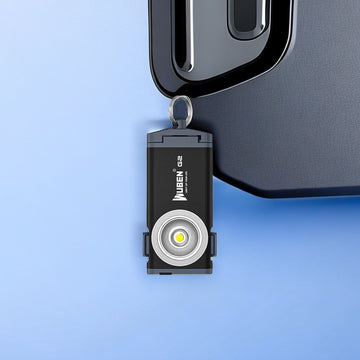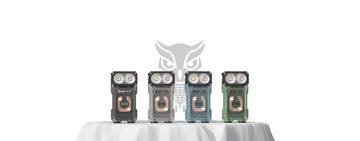
When discussing light sources and their brightness, candlepower is a fundamental metric that must be comprehended. Candlepower, also known as candela (cd), is a unit of measurement that quantifies the intensity of a light source in a specific direction. The term "candlepower" originated from the practice of comparing the brightness of artificial light sources with the standard luminous intensity of a candle.
In the realm of lighting, lumens serve as the crucial determinant of the total light output of a source, encompassing all directions. Unlike candlepower, which assesses brightness in a specific direction, lumens gauge the overall brightness and intensity of a light source. This metric is especially valuable when comparing different lighting products as it provides a holistic view of their illuminating capabilities.
Converting candlepower to lumens involves a well-defined formula that enables a seamless transition between the two units of measurement. The formula is based on the concept of solid angles, where lumens are calculated by multiplying the candlepower by the number of steradians (sr) of solid angle the light source covers. The conversion formula is as follows:
Lumens (lm) = Candlepower (cd) × Solid Angle (sr)
It is essential to recognize the solid angle as it encapsulates the region over which the light spreads. For a point source, the solid angle is 4π steradians, which is the entire sphere surrounding the source.
While the conversion formula appears straightforward, several factors can influence the accuracy of the result. One crucial factor is the efficiency and design of the light source. Different light sources, such as incandescent, fluorescent, and LED, have varying efficiencies in converting electrical energy into visible light, thus affecting the conversion from candlepower to lumens.
Another aspect to consider is the presence of optical elements like lenses or reflectors that modify the light's distribution pattern. These elements can alter the solid angle and, consequently, impact the final lumens output. Therefore, to ensure precise measurements, it is imperative to account for these factors during the conversion process.
In today's lighting landscape, lumens have taken precedence over candlepower as the primary indicator of a light source's performance. The shift is largely due to the need for a comprehensive measurement that considers the entire light output, crucial in various applications, such as street lighting, indoor illumination, automotive lighting, and even flashlights.
Lumens have allowed manufacturers and consumers alike to make informed decisions when choosing lighting solutions. Understanding the lumens output enables individuals to select the right intensity for their specific requirements, balancing brightness and energy efficiency effectively.
Comparing light output using candlepower and lumens provides valuable insights into the distinct aspects of brightness measurement. While candlepower is valuable in certain contexts where directional intensity is a priority, lumens offer a more practical approach for assessing overall performance.
For instance, in search and rescue operations, a high candlepower flashlight may be favored for its long-distance spotlighting ability. On the other hand, in everyday household lighting, lumens become the focal point as they indicate how much light will be emitted in all directions, resulting in a well-illuminated space.
In conclusion, understanding the conversion from 1 million candlepower to lumens provides an enlightening journey into the intricacies of light measurement. The transition from candlepower to lumens marks a significant shift in how we perceive and evaluate lighting solutions, ultimately leading to more efficient and effective illumination in various domains of human life.
In the realm of lighting, lumens serve as the crucial determinant of the total light output of a source, encompassing all directions. Unlike candlepower, which assesses brightness in a specific direction, lumens gauge the overall brightness and intensity of a light source. This metric is especially valuable when comparing different lighting products as it provides a holistic view of their illuminating capabilities.
Converting candlepower to lumens involves a well-defined formula that enables a seamless transition between the two units of measurement. The formula is based on the concept of solid angles, where lumens are calculated by multiplying the candlepower by the number of steradians (sr) of solid angle the light source covers. The conversion formula is as follows:
Lumens (lm) = Candlepower (cd) × Solid Angle (sr)
It is essential to recognize the solid angle as it encapsulates the region over which the light spreads. For a point source, the solid angle is 4π steradians, which is the entire sphere surrounding the source.
While the conversion formula appears straightforward, several factors can influence the accuracy of the result. One crucial factor is the efficiency and design of the light source. Different light sources, such as incandescent, fluorescent, and LED, have varying efficiencies in converting electrical energy into visible light, thus affecting the conversion from candlepower to lumens.
Another aspect to consider is the presence of optical elements like lenses or reflectors that modify the light's distribution pattern. These elements can alter the solid angle and, consequently, impact the final lumens output. Therefore, to ensure precise measurements, it is imperative to account for these factors during the conversion process.
In today's lighting landscape, lumens have taken precedence over candlepower as the primary indicator of a light source's performance. The shift is largely due to the need for a comprehensive measurement that considers the entire light output, crucial in various applications, such as street lighting, indoor illumination, automotive lighting, and even flashlights.
Lumens have allowed manufacturers and consumers alike to make informed decisions when choosing lighting solutions. Understanding the lumens output enables individuals to select the right intensity for their specific requirements, balancing brightness and energy efficiency effectively.
Comparing light output using candlepower and lumens provides valuable insights into the distinct aspects of brightness measurement. While candlepower is valuable in certain contexts where directional intensity is a priority, lumens offer a more practical approach for assessing overall performance.
For instance, in search and rescue operations, a high candlepower flashlight may be favored for its long-distance spotlighting ability. On the other hand, in everyday household lighting, lumens become the focal point as they indicate how much light will be emitted in all directions, resulting in a well-illuminated space.
In conclusion, understanding the conversion from 1 million candlepower to lumens provides an enlightening journey into the intricacies of light measurement. The transition from candlepower to lumens marks a significant shift in how we perceive and evaluate lighting solutions, ultimately leading to more efficient and effective illumination in various domains of human life.
Tags:
Related Articles




